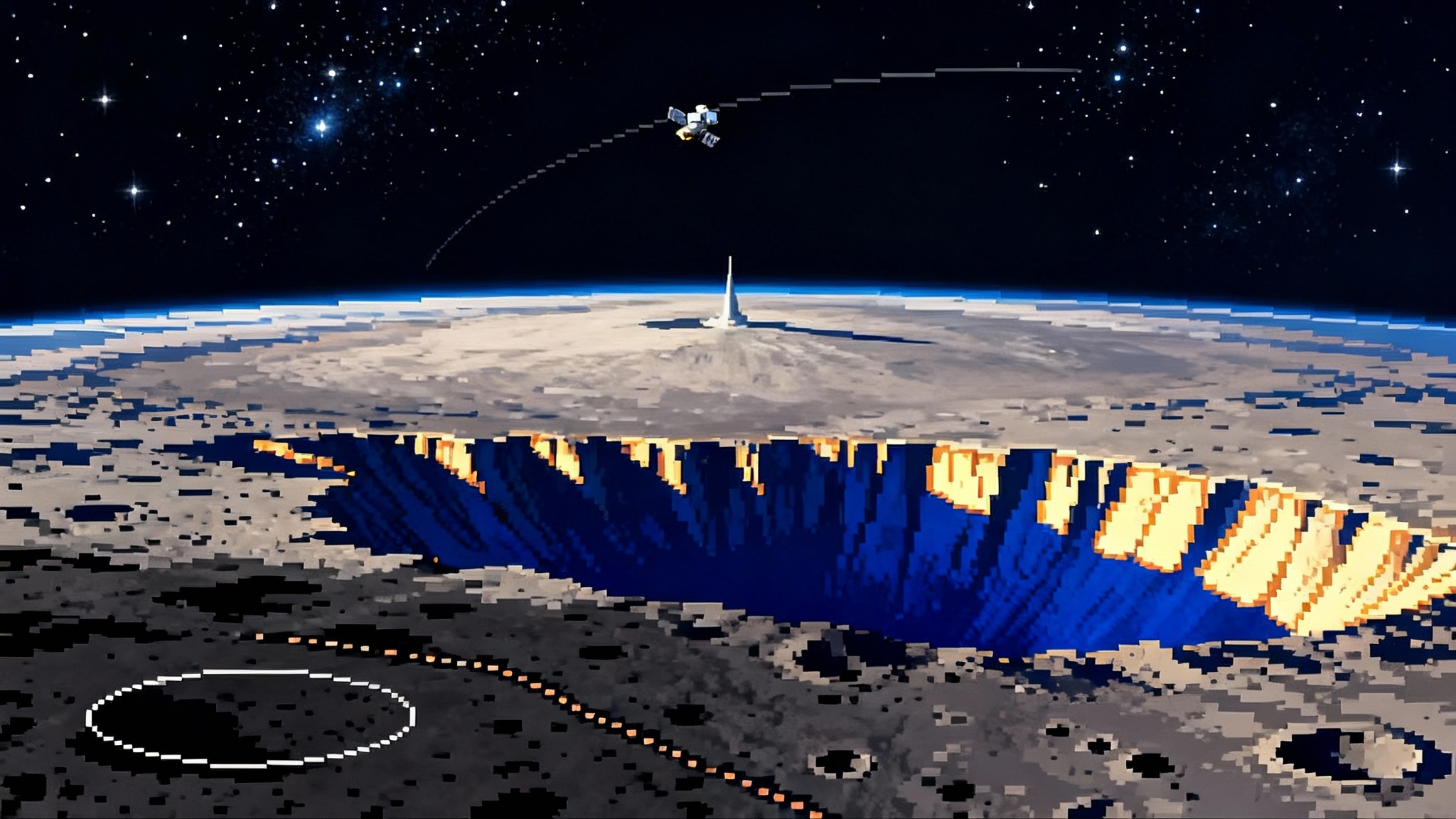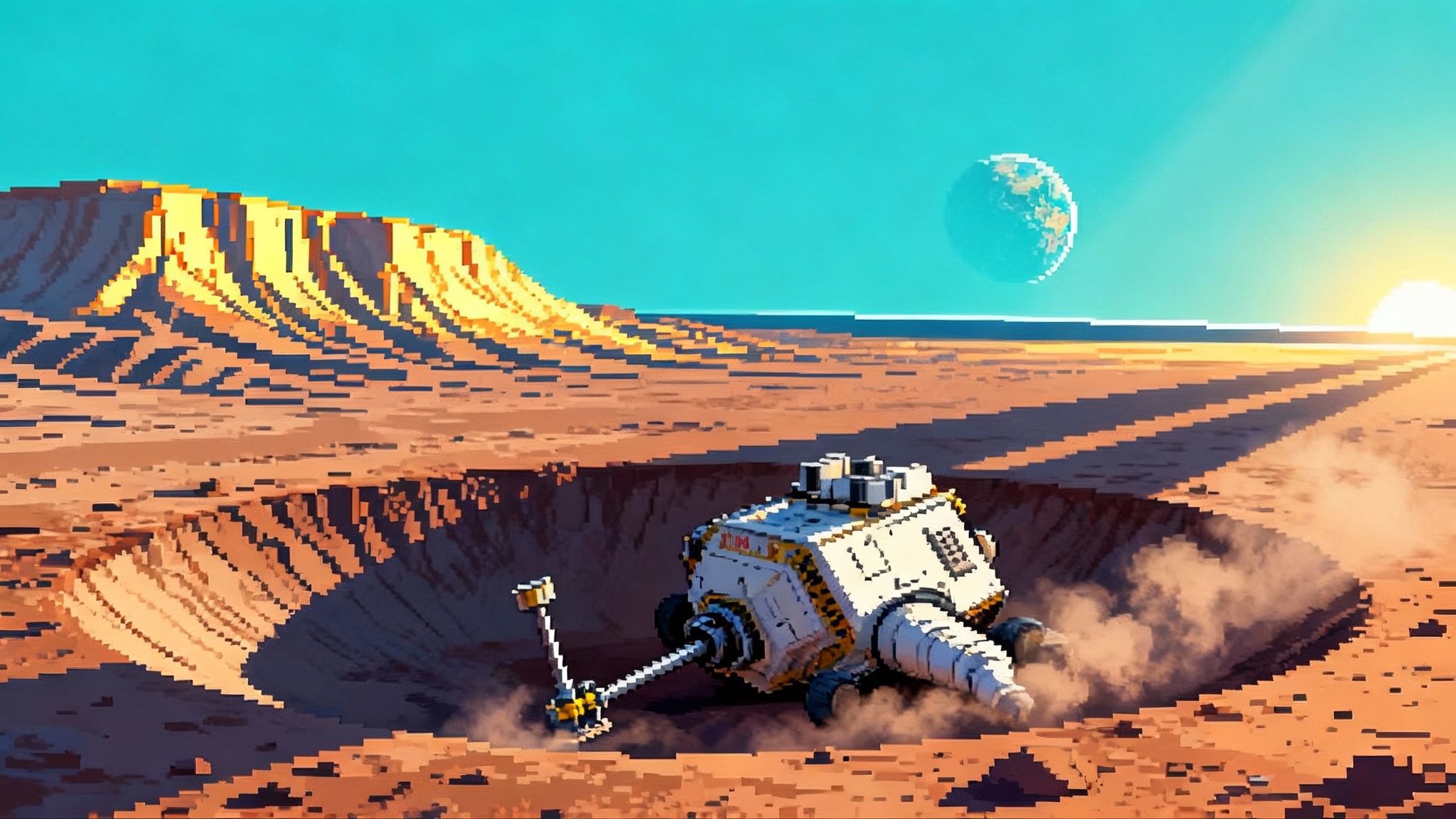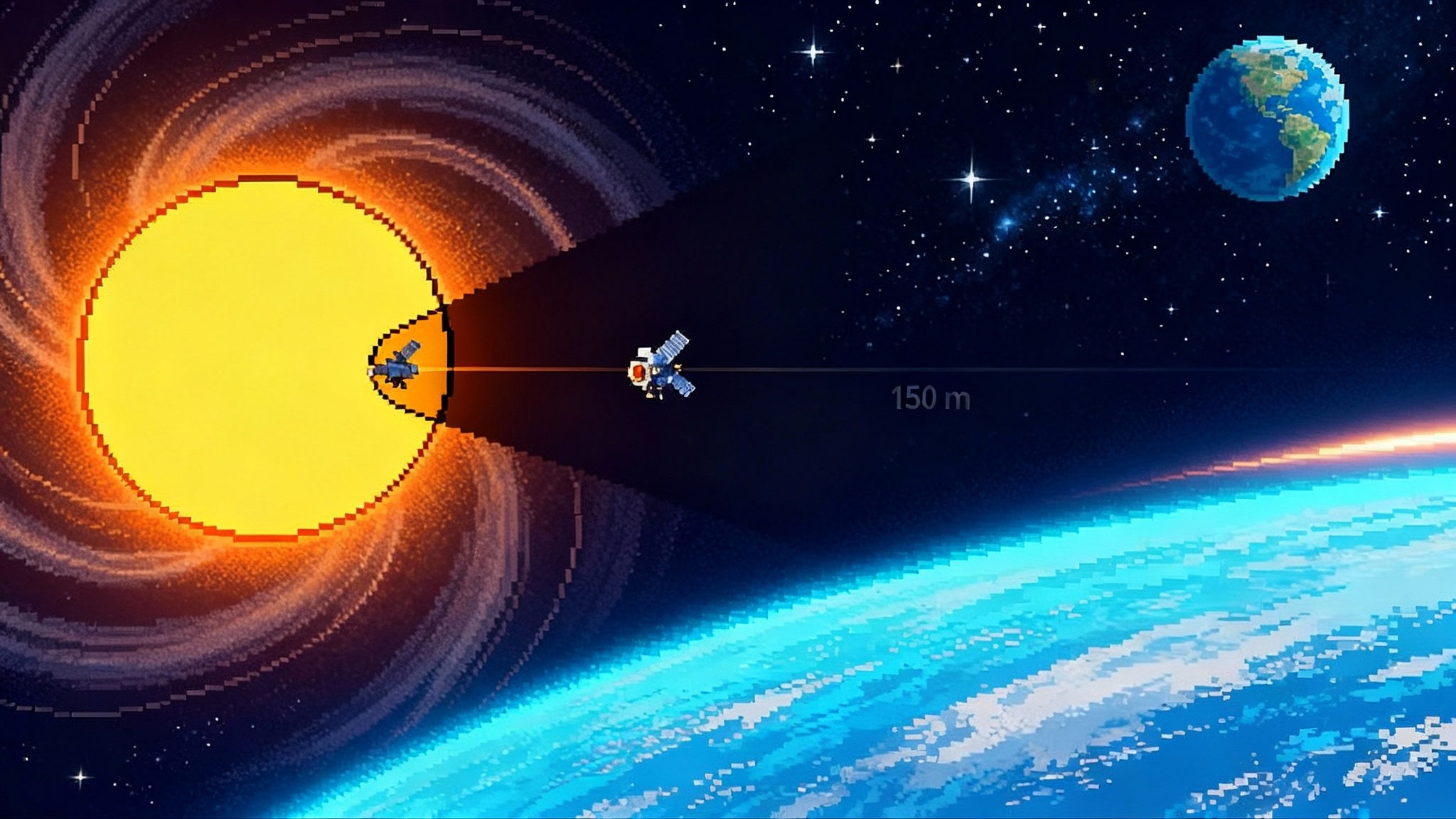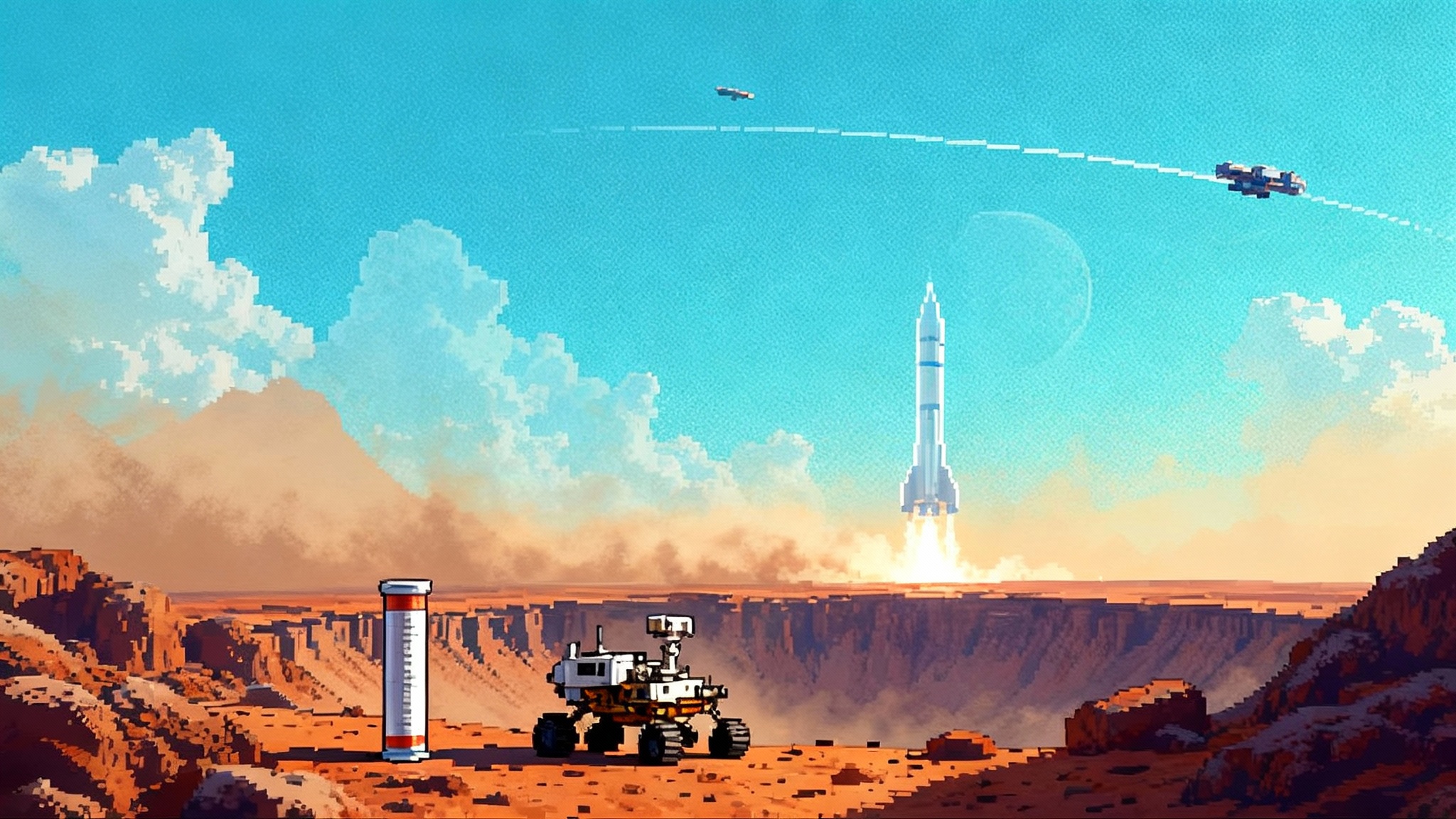Chang’e‑6 farside samples rewrite the Moon’s water map
Peer-reviewed results from Chang'e 6 show the lunar farside mantle is ultra-dry, with fresh clues about long-lived volcanism and a surprising magnetic rebound. Here is what that means for ISRU bets, south pole site choices, Artemis vs ILRS strategy, and what to fly next.

The first farside samples just redrew the map
In April 2025 a Nature paper reported the first direct measurement of water in the lunar farside mantle. The result was brutally clear. The mantle source feeding the South Pole–Aitken basin basalts contains roughly 1 to 1.5 micrograms of water per gram, the driest value ever reported from lunar interior materials. That is at least several times lower than typical estimates from nearside mantle sources, which span about 1 to 200 micrograms per gram. The work combined measurements of melt inclusions and apatite in Chang'e 6 volcanic fragments, with hydrogen isotope systematics used to back out the original magmatic water before it was altered near the surface. If you want one number that changes plans, this is it: less than 2 micrograms per gram in the farside mantle water abundance in the farside mantle.
This is not about surface frost or ice in permanently shadowed regions. It is about the Moon's deep inventory of volatile elements. Those are the volatiles you would hope to tap if you wanted to bake regolith for endogenous water or rely on volcanic glass beads as a local source. The farside looks stingy.
Why would one hemisphere be so dry?
Geology provides a guide. The lunar nearside hosts the Procellarum KREEP Terrane, a province enriched in potassium, rare earth elements, and phosphorus, along with thorium and uranium that act as long-lived heat sources. Water and thorium behave as incompatible elements during partial melting. They prefer the melt rather than the crystals, so any region that collected heat-producing elements could also have retained more volatiles when magmas formed. The farside, including the South Pole–Aitken basin, largely missed out on that jackpot.
Chang'e 6 basalts deliver another clue. Their incompatible element signatures point to an ultra-depleted mantle source, consistent with large melt extraction early in lunar history. Picture a planetary lemon that has already been squeezed. You can still press it and get something, but far less than from a fresh one. On the farside, the mantle lemon was squeezed early and hard.
There is also the trauma of the South Pole–Aitken impact itself. Direct dating of farside impact-melt clasts returns an event at around 4.25 billion years ago. That basin excavated deep and may have stirred or stripped volatiles locally. Add the lack of a KREEP heat blanket and you have a farside that cooled faster, melted less, and held onto fewer incompatible elements, including water.
Volcanism that would not quit, but changed its source
Another set of Chang'e 6 results date farside volcanic fragments to two pulses: roughly 4.2 billion and 2.8 billion years ago. That is a long volcanic run for a small body. The early pulse is tied to residual heat from the Moon's magma ocean and crust formation. The younger pulse hints that farside magmatism persisted, but it did so from a depleted source. In practice that means late lavas had fewer heat-loving and water-loving ingredients than many nearside counterparts. The chemistry and the clocks agree on a mantle that kept working, but on a thinner budget.
If your mental image of the Moon is a dead cinder after the first billion years, update it. These basalts show that even an ultra-dry interior can generate eruptions when the crust is thin and local conditions allow. The farside did not get as many maria, but it was not silent.
A magnetic field that flickered back
Perhaps the most surprising piece comes from paleomagnetism of the Chang'e 6 basalt clasts. The samples preserve field strengths on the order of 5 to 21 microteslas about 2.8 billion years ago, implying the lunar dynamo was not a simple slow fade. It dipped around 3.1 billion years ago, then rebounded. A fresh anchor for that story is the first farside constraint on mid-age lunar magnetism, reported as a reinforced dynamo recorded by Chang'e 6 basalts reinforced lunar dynamo in CE-6 basalts.
Mechanisms include precession-driven stirring, a basal magma ocean that convected near the core-mantle boundary, and late core crystallization. The farside magnetism result matters for resources because magnetic shielding affects how solar wind implants hydrogen into surface grains. Where paleofields were stronger for longer, implanted hydrogen renewal could have been reduced. Over billions of years that influences how much exogenous hydrogen is available to help make hydroxyl and water in surface materials.
What changes for ISRU bets
Think of lunar resources in three buckets: endogenous volatiles from the interior, exogenous volatiles delivered by comets and the solar wind, and structural or energetic resources like oxygen in oxides, metals, and sunlight.
- Endogenous volatiles: The farside mantle now looks ultra-dry. Betting on deep drilling for interior water on the farside is a low-odds play. Nearside pyroclastic deposits that trapped magmatic volatiles remain more promising for interior-derived water, but those locations are mostly outside the south polar architecture. If your plan assumed a farside interior that leaks convenience water, change the plan.
- Exogenous volatiles: Permanently shadowed regions near the south pole are still the best prospects for concentrated water ice. Chang'e 6 does not weaken the case for polar ice; it strengthens it by lowering the likelihood of farside interior contributions. The ice you want to mine is probably exogenous and sequestered by cold traps. That argues for surface prospecting that can discriminate patchy lenses from fluffy frost, and for engineering that can handle steep, cold, power-starved terrain.
- Structural and energetic resources: Oxygen from ilmenite and anorthosite is still everywhere. Metals for additive manufacturing are still in reach, with lunar factories near reality suggesting in situ feedstocks can scale. Sunlight is scarce inside craters, but some ridges near the south pole enjoy long illumination arcs and easier communications. On the farside those ridges are rarer and communications require relays. Power strategy matters more than ever.
South-pole landing site choices, with numbers that matter
Artemis and the International Lunar Research Station both aim at the south pole for a reason. You can work near permanently shadowed regions and still reach ridgelines that offer sunlight and line-of-sight communications. NASA's current candidate regions include Malapert Massif, the Nobile Rim, de Gerlache Rim, and others close to permanently shadowed regions while offering surface slopes and lighting acceptable for a first crewed landing.
Chang'e 6 does not move these targets, but it updates the priority within them. Sites that couple safe access to small, well-characterized cold traps with year-round power corridors and simple line-of-sight links should rise to the top. The farside's dryness also reduces the strategic advantage of any farside south-pole site for interior water. If the goal is water for propellant and life support this decade, stay near the most reachable near-rim cold traps that match your mobility and power envelope. That applies to both programs. A lunar surface logistics reset is overdue.
Three practical filters for down-selecting among candidate sites now:
- Cold-trap adjacency at traverse scale: distance to the nearest shadowed region edge in hundreds of meters, not kilometers, so you can sample and validate ice without multi-sol traverses.
- Power geometry that fits your systems: illumination fraction in 10 to 30 day windows for your solar arrays and thermal loops, plus clear paths for tethered or beamed power if you plan them.
- Communications simplicity: line-of-sight to Earth for Artemis. For ILRS farside options, reliable relay coverage and redundancy.
Artemis vs ILRS base strategy in light of a dry farside
-
Artemis: The near-term objective is a crewed landing with science returns and operational learning that scale into a sustained presence. Given the farside dryness, Artemis should front-load surface exploration with direct ice prospecting and extraction experiments near small, accessible shadowed zones. The cancellation of NASA's VIPER rover in 2024 removed a key prospecting tool. Replacing it with a CLPS delivery that carries a mobile drill, mass spectrometer, and evolved-gas analysis should be a near-term priority.
-
ILRS: The China-led station still plans a south-pole architecture, with Chang'e 7 scouting ice and a follow-on Chang'e 8 to test construction and resource technologies. Public statements have even floated a surface fission system for stable power by the 2030s. The farside's mantle dryness supports that emphasis on exogenous ice and robust power infrastructure. ILRS planners should budget less for deep volatile drilling and more for excavation, hauling, and thermal management in and around small cold traps, plus long-distance power distribution along ridgelines.
As with NASA's 2025 program reset, resilient plans hedge against single-mission risk.
The bottom line for both camps is the same. Your water comes from cold traps. Your oxygen comes from rocks. Your power comes from the Sun or reactors. Build around those truths.
The farside interior we still do not know
The new results tell us the farside mantle under South Pole–Aitken is ultra-dry and depleted, but how far that extends laterally and vertically is still uncertain. We also have a tantalizing magnetic rebound at 2.8 billion years that demands a better timeline. To turn today's breakthrough into a mature model of the lunar interior, we should fast-track the following missions and measurements.
- A farside seismic network, not a single station: Two or three small, long-lived seismometers spaced hundreds of kilometers apart would resolve crust and mantle contrasts between the interior of South Pole–Aitken and its rim. Combine broadband sensors with a compact heat-flow probe to correlate temperature gradients with structure.
- Heat-flow and electromagnetics in South Pole–Aitken: A modern heat-flow package and magnetotelluric sounder will map thermal conductivity and volatile-sensitive conductivity at depth. That connects to both dynamo history and present-day interior hydration.
- Targeted sample return from non-SPA farside terrains: Grabbing impact melts and young basalts from outside the basin will test whether dryness is regional or hemispheric.
- Polar volatiles at meter scale: A mobile platform with a coring drill and evolved-gas analysis, able to hop or drive between micro-cold traps, is the missing link between orbital hydrogen maps and usable ice inventories. It should sample the wall, floor, and sunlit lip of one small cold trap to quantify patchiness and grain-scale physics.
- Low-frequency magnetometers in orbit: A smallsat constellation can map crustal fields and induced responses to probe conductivity in the upper mantle, tightening the link between paleofields and present-day interior structure.
Importantly, the Commercial Lunar Payload Services flight to the farside's Schrödinger basin with seismometers and heat-flow instruments should be treated as pathfinder hardware for a network, not a one-off experiment. Build the second and third nodes into current manifests while the teams are hot.
A near-term checklist for decision makers
- Update resource models and timelines: Assume negligible interior water on the farside. Treat polar ice as patchy and exogenous. Do not let headline values for total ice mass lull you into thin sampling; design for heterogeneity.
- Buy down power risk first: Invest in ridge-top solar with storage, elevated arrays that catch low-angle light, and site-to-site power beaming or cable runs. On the farside, double down on relay assets and autonomous operations.
- Re-prioritize instruments: Put evolved-gas analysis, hydrogen isotope measurements, and subsurface neutron spectroscopy at the top of payload lists for early sorties. They are the quickest way to validate how ice varies over tens of meters.
- Align crew traverses with science: On the first crewed missions, plan one traverse that closes the loop between a sunlit operations area and the nearest shadowed pocket. Bring back stratified samples from the lip, the penumbra, and the cold floor to calibrate remote sensing.
- Fund redundancy, not heroics: The farside interior story will not be settled by one lander. Back-to-back, modest missions that share avionics and operations will beat a single, perfect flagship that slips years.
What this means right now
Chang'e 6 shows a farside mantle that is ultra-dry, a volcanic history that persisted longer than expected, and a magnetic field that flickered back when it should have been quiet. Together those findings explain why the Moon's hemispheres diverged. The nearside kept more heat and volatiles, so it made more and wetter magmas. The farside cooled faster, melted less, and stayed dry.
For planners, the message is practical. Do not chase interior water on the farside this decade. Put your prospecting and engineering effort into small, accessible cold traps, power corridors along illuminated ridges, and a seismo-thermal network that can nail down the interior. If we execute on those steps, the next round of samples and signals will not just rewrite the water story. They will close it with a map that tells us where to land, where to live, and how to make the Moon pay for a sustained presence.
And that is the point. The farside has told us what it is missing. Now we know where to look for what we need, and how to build for the difference.








